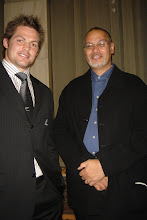 Whales were valued for the oil that they produced, when their blubber was boiled down. The oil was useful in industry especially the factories of England but also in lighting the streets. Belich writes that Britain spent £300,000 per year on whale oil for its street lamps. Other parts of whale were also useful, bone, and baleen (the frilly teeth from baleen whales, was made into buggy whips and corsets.)
Whales were valued for the oil that they produced, when their blubber was boiled down. The oil was useful in industry especially the factories of England but also in lighting the streets. Belich writes that Britain spent £300,000 per year on whale oil for its street lamps. Other parts of whale were also useful, bone, and baleen (the frilly teeth from baleen whales, was made into buggy whips and corsets.)
By the end of the 18th century Europe and America were running out of whales in the Atlantic. In 1792 the first Whaler arrived in the Pacific. Others quickly followed. They were looking for Right Whales and if possible Sperm Whales. Right Whales were valued because they were slow swimmers making them easier to catch and would float higher out of water making them easier to tow back to the ship. Sperm whales were harder to catch (audio) but each held a reservoir of Spermaceti oil in their head which was particularly valuable. (The reservoir was big enough for a man with a bucket to climb inside to empty!) Sperm Whales were also known as Catchalots because there was between 25 and 40 barrels of the valuable oil in the Spermaceti organ.
Whaling ships had the reputation for being rough and ready. They (reputedly) smelt so bad you could smell them before they could be seen. When whales were sighted Whaleboats were launched and crews chased down the whales. Once harpooned the crew then endured the “Nantucket Sleigh-ride” until they exhausted whale could be harpooned again (and again) until it died. Then the whale (often with the help of less successful crews) was towed back to the ship. Whale blubber was then (flensed)cut off in huge strips which were then boiled in Try Pots giving off smoke and the dreadful stench. (think of the deception used at the end of Russell Crowe’s ‘Master and Commander’)
A whaling ship could be at sea for 2-3 years.
Whaling was dangerous. Few seamen could swim and life aboard the ship was dangerous enough let alone chasing and catching an angry whale. Moby Dick was based on a true story. The whaler 'Essex' was sunk in 1820 by an angry Sperm Whale that smashed in its side.
When they had the chance the Whaling crew wanted to let loose and have a (really) good time.
At first they called into Port Jackson to re-supply but quickly found the regulations and taxes (and corruption – early Sydney was run like a fiefdom by the Officers amongst the guards) to onerous. Luckily nearby was a tax free haven. The Bay of Islands was already recognised as a world class anchorage. A tiny settlement Kororareka developed into what the Whalers wanted most, a safe anchorage, with plenty of food and water, cheap rum and women.
 Whales were valued for the oil that they produced, when their blubber was boiled down. The oil was useful in industry especially the factories of England but also in lighting the streets. Belich writes that Britain spent £300,000 per year on whale oil for its street lamps. Other parts of whale were also useful, bone, and baleen (the frilly teeth from baleen whales, was made into buggy whips and corsets.)
Whales were valued for the oil that they produced, when their blubber was boiled down. The oil was useful in industry especially the factories of England but also in lighting the streets. Belich writes that Britain spent £300,000 per year on whale oil for its street lamps. Other parts of whale were also useful, bone, and baleen (the frilly teeth from baleen whales, was made into buggy whips and corsets.)

.jpg)




